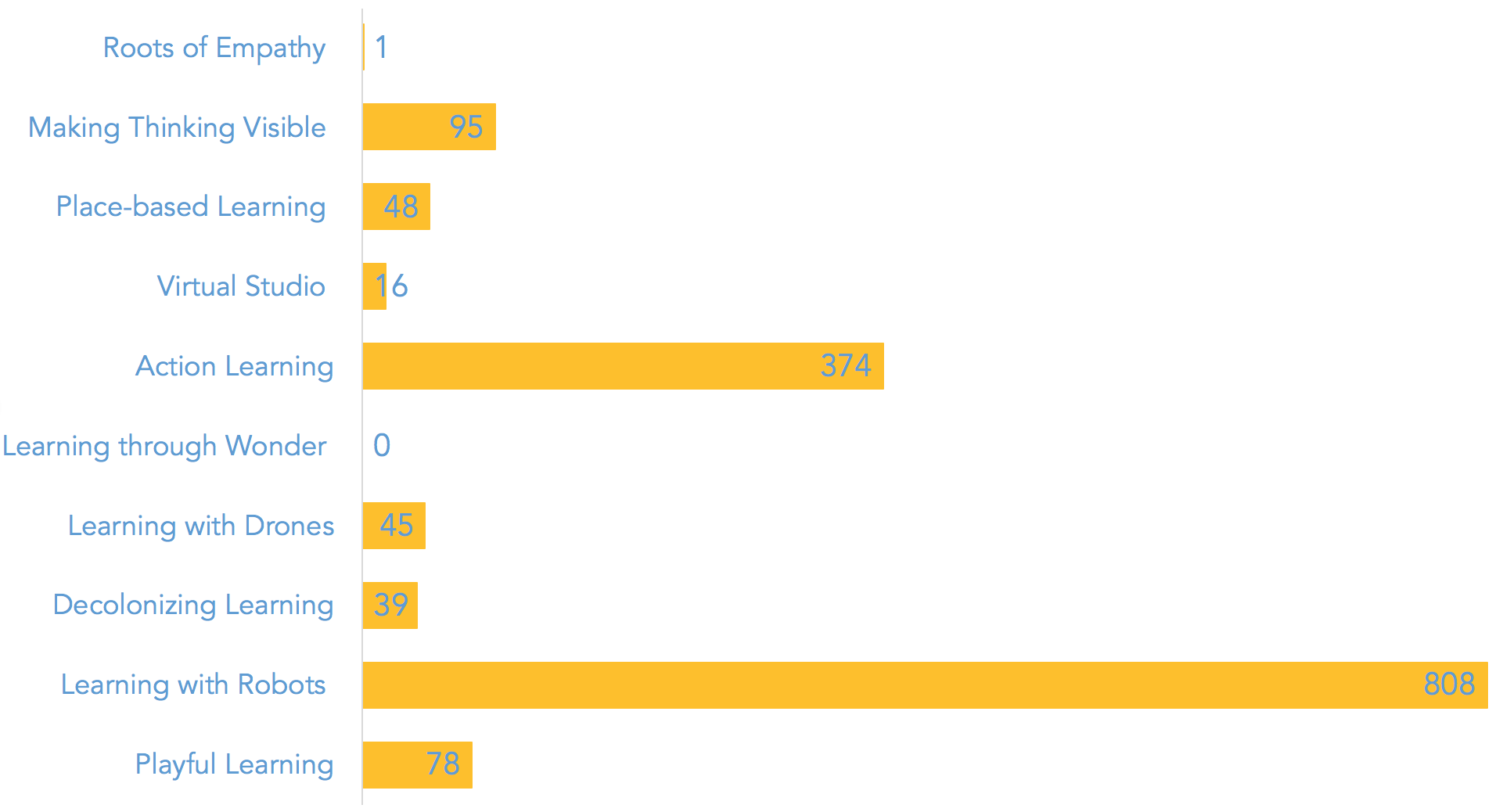Innovating Pedagogy 2019: Learning can be wonderful!

“Learning can be playful, wonderful, a way of understanding and making sense of the world” (Innovating Pedagogy 2019).
It’s here! If you are like me, you have been waiting since mid November for the release of the seventh Innovating Pedagogy report. The 2019 edition is a departure of the usual end of year publication date, hence the chronology moved from 2017 to 2019. I personally welcome the change, as it allows us at AACE Review to start the year with a fresh set of pedagogical innovations to contemplate.
The Open University published this edition in collaboration with the Centre for the Science of Learning & Technology (SLATE), University of Bergen, Norway. As usual, the report proposes ten innovations that are already in currency but have not had a profound influence on education in their current form. Each trend is rated based on its impact (high or medium) and placed on a timeline for adoption (ongoing, 2-5 years, 4+ years).

Overview of 2019 Innovating Pedagogy trends timeline
Trends in Depth
As a birthday treat I haven taken a couple of hours out of my workday for an in-depth perusal of the report. What a nice way to start the new work year.
- Playful Learning:
Playful learning emphasizes the role of play beyond k12 environments, at universities and in continuing education. Play should remain a central component of teaching and learning throughout life. Playful learning flourishes in spaces that are safe, foster exploration and support productive failure. The challenge lies in finding the right balance between learners’ agency, freedom to play and explore, and the guidance teachers need to offer for better learning outcomes. - Learning with Robots:
Robots have a long history in education, but the breadth of potential uses is now increasing rapidly. Advances in design and hardware support natural forms of interaction or dialogue with robots, using speech, gestures, and emotional expressions. - Decolonizing Learning:
Decolonization requires systematic unsettling change. Part of this process involves acknowledging the ways in which digital presence can contribute to colonization. A curriculum provides a way of identifying the knowledge we value. It structures the ways in which we are taught to think and talk about the world. Historically, schools have played an active role in colonization. As a result, they frequently fall short of serving the educational needs of indigenous populations. As education tackles global issues and engages people worldwide with new initiatives such as MOOCs, the ideas of open learning provide sparks of opportunity for new approaches that serve the needs of local communities. Rather than amplifying oppression, it can act as a catalyst that precipitates a change in the aims of education. - Drone-based learning:
Drones are light-weight, remote-controlled devices, made to carry out various tasks, either while in the air or once they have landed. Typically, they are used to take photographs or make videos. Learners can use them to look inside inaccessible places, see a landscape from different angles or collect a variety of data. - Learning Through Wonder:
Wondrous encounters motivate learners to see a phenomenon from many different perspectives. Teachers can include wonder in learning activities through magic shows, object lessons, nature tables, cabinets of curiosities, and outdoor quests, as well as through literature that evokes a sense of wonder. - Action learning:
Action learning is a team-based approach to professional development that addresses real and immediate problems. The approach was developed for workplace learning and is now being used more widely. - Virtual Studio:
The studio is the primary learning environment for many creative disciplines, including Design and Architecture. The studio is changing, allowing different forms to emerge in education. For example, a globally distributed design, specification, and fabrication studio is no longer an impossibility – it is a probable future for design practice as well as education. Read our summary of visual collaboration tools for some practical guidance. - Place-based Learning:
Place-based learning considers location to be a trigger for learning and an active part of how people learn. It is an approach that involves looking for learning opportunities within a local community and using the natural environment to inspire learners. - Making thinking visible:
Learners eave traces of their thinking in the form of notes and interactions with digital assets. These visible records of students’ personal and social learning can become resources for reflection. Teachers can see how each student is progressing towards mastery of a topic and can identify where students are blocked or have misunderstood a topic. - Roots of Empathy:
In a departure of the usual write-up style, the report focuses on a single classroom program instead of describing a more general trend. ‘Roots of Empathy’ is designed to teach children aged 5 to 13 empathy. The program is based on the principle that when children understand how they feel and how other people feel, they find it easier to cope in social situations.
Prevalence in the AACE Research Community
The Innovating Pedagogy report clearly focuses on teaching over technology, which sets it apart from other tech trend summaries. Another characteristic is the mix of novel and long-standing concepts. It makes the report a great starting point to delve into various research areas of educational technology and the learning sciences.
How prevalent are the pedagogy trends highlighted in the report in the AACE research community? We checked the 100,000+ records of LearnTechLib – The Learning Technology Library – here are the results:

# of Records in LearnTechLib
TIP: You can create a collection on any of the topics that interest you most in LearnTechLib and export the bibliographic references as well as full texts to a bibliographic reference manager such as Zotero. Read our article for more information: EdTech Research: Finding, Organizing and Citing Research – Bibliographic Formats & Tools
Conclusion
Overall, I enjoyed the mix of technologies (robots, drones) with pedagogies that have a long and rich tradition. Given my interest in design thinking and serious play, I was thrilled to see that playful learning and learning through wondrous encounters are featured centrally in the report. Which other trends stand out? The report’s introduction points readers towards ‘Decolonizing Learning’ as ‘a pedagogy that could produce radical changes, leading to learning that not only supports and develops communities but is also strongly rooted within them’. We will follow up with write-ups on this and other selected trends by the AACE Review bloggers.
